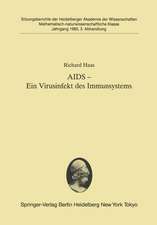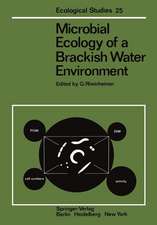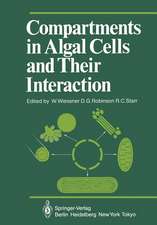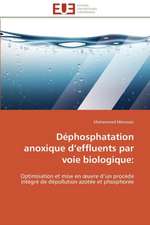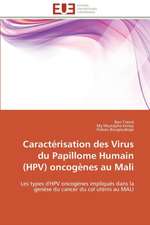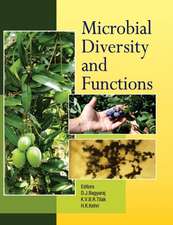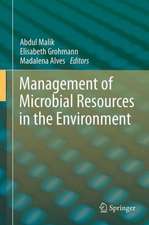Health and Safety Aspects of Food Processing Technologies
Editat de Abdul Malik, Zerrin Erginkaya, Hüseyin Ertenen Limba Engleză Hardback – 13 noi 2019
Food processing is expected to affect content, activity and bioavailability of nutrients; the health-promoting capacity of food products depends on their processing history. Traditional technologies, such as the use of antimicrobials and thermal processing, are efficient in increasing nutritional value to an extent, though they may not be effective at addressing food safety, particularly when it comes to maintaining the food's molecular structure. Modern food processing plants improve the quality of life for people with allergies, diabetics, and others who cannot consume some common food elements. Food processing can also add extra nutrients, such as vitamins. Processed foods are often less susceptible to early spoilage than fresh foods and are better suited for long-distance transportation from the sourceto the consumer. However, food processing can also decrease the nutritional value of foods and introduce hazards not encountered with naturally occurring products. Processed foods often include food additives, such as flavourings and texture-enhancing agents, which may have little or no nutritive value, and may in fact be unhealthy.
This book deals with the subject of food processing in a unique way, providing an overview not only of current techniques in food processing and preservation (i.e., dairy, meat, cereal, vegetables, fruits and juice processing, etc.) but also the health and safety aspects: food technologies that improve nutritional quality of foods, functional foods, and nanotechnology in the food and agriculture industry. The text also looks into the future bydefining current bottlenecks and future research goals. This work will serve as a ready reference for the subject matter to students and researchers alike.
| Toate formatele și edițiile | Preț | Express |
|---|---|---|
| Paperback (1) | 1235.25 lei 6-8 săpt. | |
| Springer International Publishing – 13 noi 2020 | 1235.25 lei 6-8 săpt. | |
| Hardback (1) | 977.97 lei 38-44 zile | |
| Springer International Publishing – 13 noi 2019 | 977.97 lei 38-44 zile |
Preț: 977.97 lei
Preț vechi: 1286.81 lei
-24% Nou
Puncte Express: 1467
Preț estimativ în valută:
187.14€ • 193.06$ • 156.17£
187.14€ • 193.06$ • 156.17£
Carte tipărită la comandă
Livrare economică 22-28 martie
Preluare comenzi: 021 569.72.76
Specificații
ISBN-13: 9783030249021
ISBN-10: 3030249026
Pagini: 669
Ilustrații: XVI, 672 p. 97 illus., 83 illus. in color.
Dimensiuni: 155 x 235 mm
Greutate: 1.13 kg
Ediția:1st ed. 2019
Editura: Springer International Publishing
Colecția Springer
Locul publicării:Cham, Switzerland
ISBN-10: 3030249026
Pagini: 669
Ilustrații: XVI, 672 p. 97 illus., 83 illus. in color.
Dimensiuni: 155 x 235 mm
Greutate: 1.13 kg
Ediția:1st ed. 2019
Editura: Springer International Publishing
Colecția Springer
Locul publicării:Cham, Switzerland
Cuprins
1. Management of Food Safety and Hygiene: An Overview.- 2. Food Contamination and Food Spoilage.- 3. Microbial escalation in meat and meat products and its consequences.- 4. Natural Microflora of Different Types of Foods.- 5. Emerging Technologies in Cereal Processing: Present Status and Future Potential in India.- 6. Emerging Technologies in Dairy Processing: Present status and Future Potential.- 7. Insect pest infestation during storage of fruits and vegetables.- 8. Insect pest infestation during storage of cereal grains, pulses and oilseeds.- 9. Recent Studies on Healthy Nutrients Changing in Fruit Juices Processed with Non-thermal Technologies.- 10. Potential industrial use of compounds from by-products of fruits and vegetables.- 11. Phytochemicals of whole grains and effects on health.- 12. Chemical Hazards in Foods.- 13. Risk Management of ChemicalHazards Arising During Food Manufacturing.- 14. Evaluation of probiotics in terms of food safety and human health.- 15. Beneficial bacterial biofilms in food industry.- 16. Next generation probiotics their molecular taxonomy and health benefits.- 17. Continuing Controversies Regarding Human Health Concerns from Nitrite and Nitrate Consumption in the Diet.- 18. The Risk of Vancomycin Resistant Enterococci Infections from Food Industry.- 19. New Concept in Packaging: Milk Protein Edible Films.- 20. Food Nanotechnology: An Emerging Technology in Food Processing and Preservation.- 21. Nanoparticles in Food Packaging: Opportunities and Challenges.- 22. Ultrasound: A Food Processing and Preservation Aid.- 23. A Natural Way of Food Preservation: Bacteriocins and applications.
Notă biografică
Abdul Malik is a professor and former head of the Department of Agricultural Microbiology at Aligarh Muslim University in Aligarh, India. Zerrin Erginkaya is a professor and former head of the Department of Food Engineering at Cukurova University in Adana, Turkey, and Hüseyin Erten is current head of the Department of Food Engineering, Cukurova University in Adana Turkey.
Textul de pe ultima copertă
Food processing is expected to affect content, activity and bioavailability of nutrients; the health-promoting capacity of food products depends on their processing history. Traditional technologies, such as the use of antimicrobials and thermal processing, are efficient in increasing nutritional value to an extent, though they may not be effective at addressing food safety, particularly when it comes to maintaining the food's molecular structure. Modern food processing plants improve the quality of life for people with allergies, diabetics, and others who cannot consume some common food elements. Food processing can also add extra nutrients, such as vitamins. Processed foods are often less susceptible to early spoilage than fresh foods and are better suited for long-distance transportation from the source to the consumer. However, food processing can also decrease the nutritional value of foods and introduce hazards not encountered with naturally occurring products. Processed foods often include food additives, such as flavourings and texture-enhancing agents, which may have little or no nutritive value, and may in fact be unhealthy.
This book deals with the subject of food processing in a unique way, providing an overview not only of current techniques in food processing and preservation (i.e., dairy, meat, cereal, vegetables, fruits and juice processing, etc.) but also the health and safety aspects: food technologies that improve nutritional quality of foods, functional foods, and nanotechnology in the food and agriculture industry. The text also looks into the future by defining current bottlenecks and future research goals. This work will serve as a ready reference for the subject matter to students and researchers alike.
Caracteristici
Provides an overview not only of current techniques in food processing and preservation (i.e., dairy, meat, cereal, vegetables, fruits and juice processing, etc.) but also the health and safety aspects Describes food technologies that improve nutritional quality of foods, functional foods, and nanotechnology in the food and agriculture industry Serves as baseline information for future research and defines current bottlenecks and future research goals



